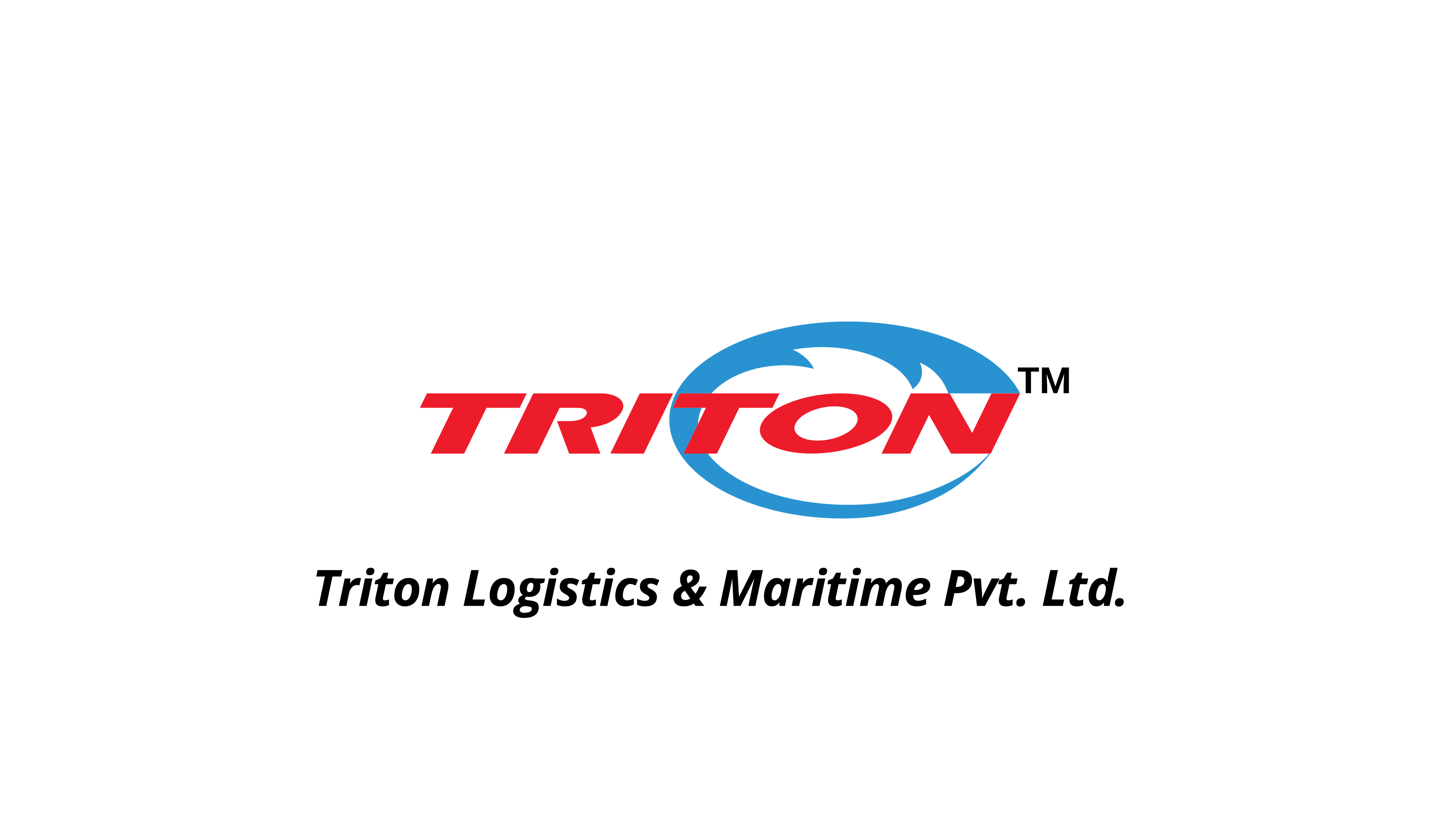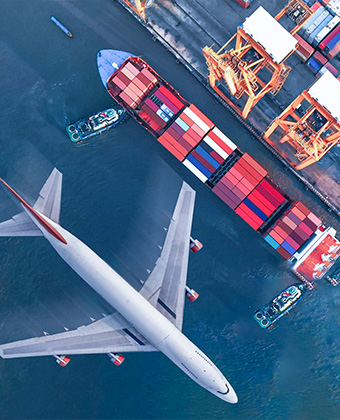
In pharmaceutical logistics, the transport of life-saving medicines requires an efficient, reliable and safe supply chain. When it comes to selecting the best mode of transportation, many companies choose air freight by default for its speed. However, as highlighted in recent discussions, particularly in our industry-focused podcast on pharma logistics, air freight is not always the fastest or safest option when it comes to ensuring the integrity of pharmaceuticals.
Pharma companies often face a trade-off between speed, cost and safety when deciding whether to ship by air or sea. While air transport is associated with speed and efficiency, it often comes with high costs and certain risks – especially when the products being transported are temperature-sensitive. On the other hand, sea freight services offer a more balanced, cost-effective solution, with the added benefits of better cargo security and flexibility in handling a variety of pharmaceutical shipments.
Air Freight: The Premium, Expedited Option
It’s well understood that air freight has long been viewed as the fastest mode of transport, especially when it comes to time-sensitive pharmaceutical deliveries. Certainly, speed is a critical factor in the pharmaceutical supply chain, particularly in emergency situations where timely delivery can be a matter of life and death.
However, speed comes at a significant cost. Air transport tends to be more expensive than sea freight shipping due to fuel surcharges, higher handling costs and the need for more frequent departures. These added costs can quickly escalate, particularly when pharma companies are shipping large volumes of products or facing the pressure of tight margins.
Furthermore, air freight can sometimes be the least safe option for pharmaceuticals. Air transport often involves higher risks of temperature excursions during the flight, especially with sensitive products that need to be maintained within very specific temperature ranges. The logistics chain in air freight can be disrupted by factors such as temperature fluctuations or delays, which can lead to compromised product integrity.

Sea & Ocean Freight: The Balanced, Reliable Solution
While air freight may win in speed, sea and ocean freight offers a host of advantages that make it the preferred choice for pharma logistics – particularly in terms of cost-effectiveness, capacity and safety.
1. Cost-Effective Shipping
One of the most compelling reasons to choose sea freight for pharmaceutical transport is the cost. Sea freight services offer significant cost savings compared to air freight, particularly when transporting large volumes of pharmaceutical products over long distances. This is especially important in the context of rising logistics costs and the need for pharma companies to maintain affordable prices for consumers.
2. Superior Temperature Control
As pharma companies increasingly rely on cold chain logistics, sea freight has emerged as a reliable solution for temperature-sensitive pharmaceuticals. Modern advancements in sea freight shipping have led to the development of temperature-controlled containers that maintain strict temperature ranges for extended periods, ensuring that the quality and efficacy of the drugs are preserved throughout the journey.
Challenges in maintaining cold chain integrity have driven the need for innovative packaging solutions. Sea freight allows pharma companies to invest in more robust and long-lasting temperature control systems than what’s possible with air freight, making it a safer option for certain pharmaceutical products.
3. Capacity and Flexibility
Sea freight offers far greater capacity for transporting pharmaceuticals in bulk compared to air freight. This flexibility allows for the transportation of a wider variety of pharmaceutical products, including larger shipments, bulk orders and even hazardous materials that require special handling.
Sea freight services can also adapt to diverse shipping needs. Whether it’s large-scale shipments of vaccines, injectables or biologics, ocean freight solutions provide more flexibility in terms of packing configurations, delivery schedules and global reach.
4. Safer, More Secure Transport
When it comes to safeguarding sensitive pharmaceuticals, sea freight offers a safer alternative to air freight. The increased complexity and regulatory requirements in pharmaceutical logistics, particularly in cross-border shipments. Freight forwarders who specialize in sea freight shipping have extensive experience in handling pharmaceutical products, ensuring compliance with all regulatory standards, and safeguarding the cargo against risks like counterfeiting or tampering.

Which One Is Right for Your Business: Air Freight vs. Sea Freight
The decision to choose between air and sea freight in pharma logistics should be based on a combination of factors, including:
- Urgency: If the shipment is extremely time-sensitive (such as in emergency medical situations), air freight is the ideal choice, despite its higher cost.
- Cost Considerations: When looking for a cost-effective solution for large shipments or non-urgent deliveries, sea freight is typically the better choice.
- Cargo Type: For larger volumes of temperature-sensitive pharmaceuticals, especially those requiring long transport times, sea freight services offer a more reliable and sustainable option with better temperature control.
- Supply Chain Complexity: The complexity of modern pharmaceutical supply chains requires a well-rounded approach. Freight forwarders who specialize in ocean freight can offer the visibility and coordination needed to maintain product integrity, ensuring all compliance and traceability requirements are met.
Sea Freight Services: The Smart Choice for Healthcare Logistics
In 2025, pharma companies need to embrace intelligent chain logistics that optimize not just speed but also safety and cost-efficiency. As freight forwarders become increasingly adept at managing both air and sea freight services, the focus should be on making smarter choices that balance all aspects of logistics, including cost, efficiency and security.
By prioritizing sea freight for large, temperature-sensitive shipments, pharma companies can ensure the integrity of their products while keeping costs under control. With the rise of advanced temperature-controlled containers and smart logistics platforms, ocean freight offers an attractive solution that aligns with the demands of the pharmaceutical sector in 2025.
Ready to optimize your pharma logistics strategy?
Explore sea freight services offered by Triton Logistics and Maritime Private Limited today and discover how sea freight shipping can provide a safer, more cost-effective and efficient option for transporting your pharmaceutical products globally.
Air vs Sea in Pharma Logistics: Why the Most Expensive Mode Isn’t Always the Fastest – or Safest
In the complex world of pharmaceutical logistics, transporting life-saving medicines is more than just moving boxes—it’s about precision, reliability, and integrity. Speed often takes the spotlight, leading many pharmaceutical companies to default to air freight. But is it truly the most effective mode? At Triton Logistics & Maritime, we believe the conversation must evolve.
As a premium logistics partner trusted by leading healthcare brands worldwide, we challenge the conventional mindset: the most expensive solution isn’t always the fastest—or the safest.
The Air Freight Assumption: Speed at a Steep Price
Air freight has long been synonymous with speed. In emergencies—like vaccine rollouts or critical drug shortages—air is often indispensable. However, when examined through the lens of total cost, product safety, and carbon impact, the picture becomes less clear.
According to IQVIA’s white paper “Frozen Assets” (IQVIA, 2022), nearly 20% of temperature-sensitive pharmaceutical losses are due to breaks in the cold chain—many of which occur during air transit. Despite its speed, the fragmented nature of air logistics—from tarmac delays to frequent handling—amplifies the risk of temperature excursions.
Further, IATA reports that pharmaceutical shippers prioritize temperature control, shipment visibility, and GDP compliance even more than speed (IATA Knowledge Hub, 2023). This underscores a critical insight: in pharma logistics, speed without stability is a liability.
Sea Freight: The Unsung Hero of Modern Pharma Supply Chains
As a global freight forwarder with strong roots in ocean logistics, Triton has witnessed a sea change. Pharma clients are increasingly turning to sea freight—not just for cost-efficiency, but for its advanced temperature control, improved cargo security, and sustainable performance.
According to the Climate Action Accelerator, sea freight can cut CO₂ emissions by over 80% compared to air freight, making it a cornerstone for environmentally responsible healthcare supply chains (Climate Action Accelerator, 2023).

Why Leading Pharma Clients Are Switching to Sea
1. Controlled Cold Chain Performance
Ocean containers today are equipped with next-generation temperature monitoring, enabling long-duration shipping with tight temperature control. Unlike air, where exposure on the runway or during transfer increases risks, reefer containers maintain a stable environment across the entire journey.
2. Economies of Scale
As pharma production scales globally, so do shipment sizes. Sea freight enables cost-effective, bulk transport of vaccines, biologics, and APIs. According to Cargo Facts (2024), pharmaceutical shippers now routinely use ocean freight for 40–50% of cold chain cargo—a trend driven by smarter packaging and better visibility.
3. Reduced Handling = Lower Risk
Fewer touchpoints in ocean shipping translate to lower chances of cargo tampering, damage, or compliance errors. This is critical in highly regulated markets where even minor deviations can render a batch unusable.
4. Adaptability and Global Reach
From Latin America’s vaccine exports to India’s biologics hubs, sea routes today connect every major pharmaceutical market. Our global Triton network ensures seamless coordination and real-time visibility at every leg of the journey.
Comparative Snapshot: Air vs. Sea in Pharma
| Factor | Air Freight | Sea Freight |
| Speed | High (24–72 hours) | Moderate (7–30 days) |
| Cost | High (5–10x more than sea) | Economical |
| Temperature Excursions | Higher due to handling and delays | Lower with modern reefer tech |
| Sustainability | High carbon footprint | ~80% less CO₂ emissions |
| Shipment Size | Limited by aircraft capacity | Ideal for bulk, flexible sizing |
Sources: IATA, IQVIA, Climate Action Accelerator, Cargo Facts
The Triton Perspective: Strategic Thinking, Not Speed Chasing
At Triton Logistics & Maritime, we advocate for a strategic modal mix based on urgency, cargo profile, and end-market demand. Our pharmaceutical logistics experts work with clients to assess each shipment’s risk profile and match it to the optimal transport mode.
We don’t just ship—we design intelligent pharma logistics.
Our compliance-first approach, integrated track-and-trace systems, and global sea freight capabilities empower pharma companies to scale responsibly—without compromising on safety or sustainability.
Rethinking Pharma Logistics in 2025
The future of pharmaceutical supply chains lies not in chasing speed, but in balancing cost, risk, and responsibility. In a world increasingly defined by regulatory scrutiny and environmental accountability, air freight will remain vital—but it is no longer the default.
As trusted advisors to some of the most respected healthcare brands, Triton urges pharma companies to see ocean freight not as a compromise, but as a competitive edge.
Want to Transform Your Pharma Supply Chain?
Discover how Triton Logistics & Maritime can help you make smarter, safer, and more sustainable logistics decisions.
📩 Connect with our Pharma Logistics Experts
🌐 www.tritonlogistics.com
🔹 Premium sea freight solutions tailored for healthcare
🔹 Cold chain compliance with GDP-certified carriers
🔹 End-to-end visibility across global trade lanes






